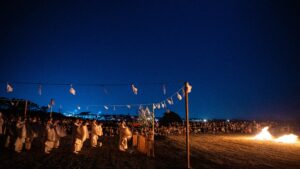Izumo Taisha Shrine: Mystical Secrets of Izumo's Spiritual Power
Izumo holds a special place in Japanese history starting mythological ancient times. Several reasons: The largest Shimenawa, sacred straw ropes, in Japan, the largest Main Shrine in ancient times, the Kamiarisai Festival in October of the lunar calendar, where deities from across Japan gather in Izumo, the largest Bronze bell-shaped vessels and Bronze Swords in Japan as the historical treasures, Izumo Taisha, a holy shrine, stands alongside Ise Jingu Shrine, Numerous Myths and Legends for generations, and the Kamuyogoto Ritual Greetings to the Emperor, solely by the highest priest of Izumo Taisha Shrine. That is Izumo is a special place in Japanese history based on the unique blend of historical, religious, and cultural elements.
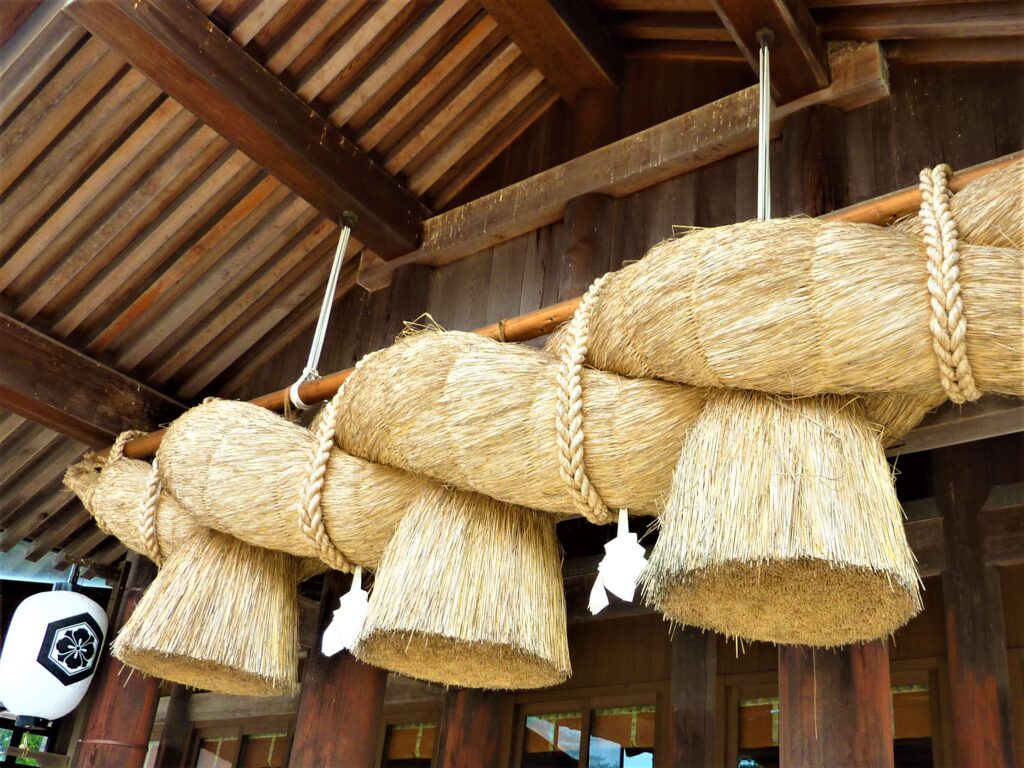
The Origin of Izumo Taisha: Nation building, and then Transfer Land of Izumo

The first appearance of Izumo Taisha dates back to the year 659, as recorded in the KOJIKI (Records of Ancient Matters), one of the oldest extant books, even though we lack clear records regarding its initial establishment as follows: After Okuninonushi, Izumo’s deity, had completed “Kuni-zukuri”, or creating and cultivating the land of Japan through various skills such as rice firming, medical arts, pest control, and metalwork, Amaterasu Omikami (the mythical ancestress of the Imperial Family) dispatched her messengers to Izumo. Their mission was to persuade Okuninonushi to transfer rulership of Japan to her grandson, who was destined to rule the land. Following numerous negotiations, Okuninonushi consented to this request, an event known as “Kuni-Yuzuri,” but with one condition of the construction of a tall and large shrine where he could fulfill a vital role in Shinto's sacred affairs known as "Kakuriyo." After that, Okuninonushi's son, Takeminakata, relocated to Suwa province. This marks the origin of the Izumo Taisha Shrine, where the realm of myth continues to persist to the present day.
Izumo Taisha Shrine is an Incredibly Large
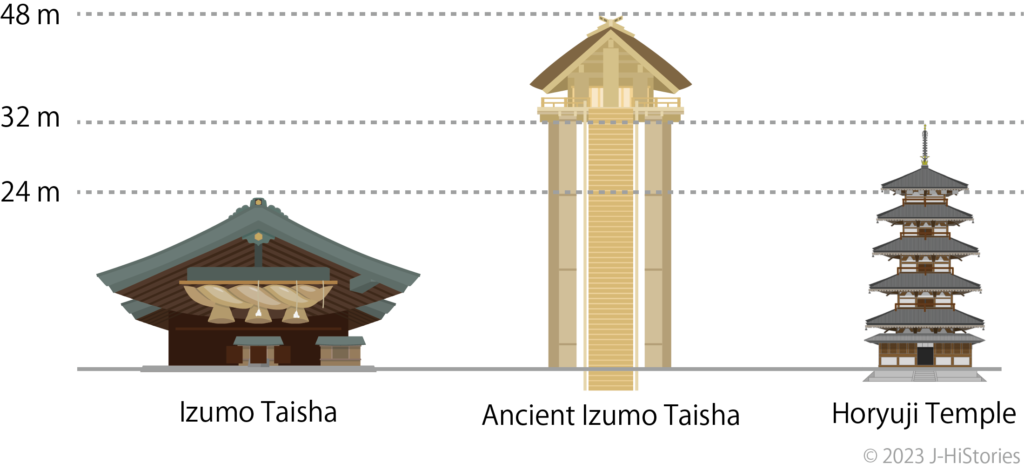
The ancient main shrine is believed to have stood at a height twice that of its present structure, reaching an imposing 48 meters and 1.3 times that of the five-story pagoda of Horyuji Temple. This gains credence from a significant discovery made in 2000 when a collection of colossal sets of three pillar logs, each with a diameter of 1.3 meters, was unearthed. These logs had been bound together with iron rings to form a single pillar. This discovery offers compelling evidence of the existence of a substantial shrine. Further emphasizing the grandeur of Izumo Taisha is the largest Shimenawa in Japan, hanging over the Kaguraden hall. It presents a truly awe-inspiring spectacle. Crafted by weaving and twisting softened straw, the sacred rope stretches an impressive 13.6 meters in length and weighs 5.2 tons. Its primary role is to serve as a boundary, a division between the realm of the deities and the mundane world. On the other side of this sacred rope lies the world of "Okuninushi," who created the nation.
The Existence of A Powerful Ruler in Izumo
Izumo was a thriving region during the Yayoi period (approximately BC3C - AD3C). Blessed with natural ports like Kando Lagoon and Lake Shinji, it played a pivotal role in the transportation of the Sea of Japan and was abundant in natural resources. Actually, Izumo Taisha Shrine was located on the banks of Kando Lagoon, a major transportation hub. The lush forests provided timber, and high-quality iron sand along the Hii River crafted farming tools, leading to bountiful harvests. There are some compelling facts.
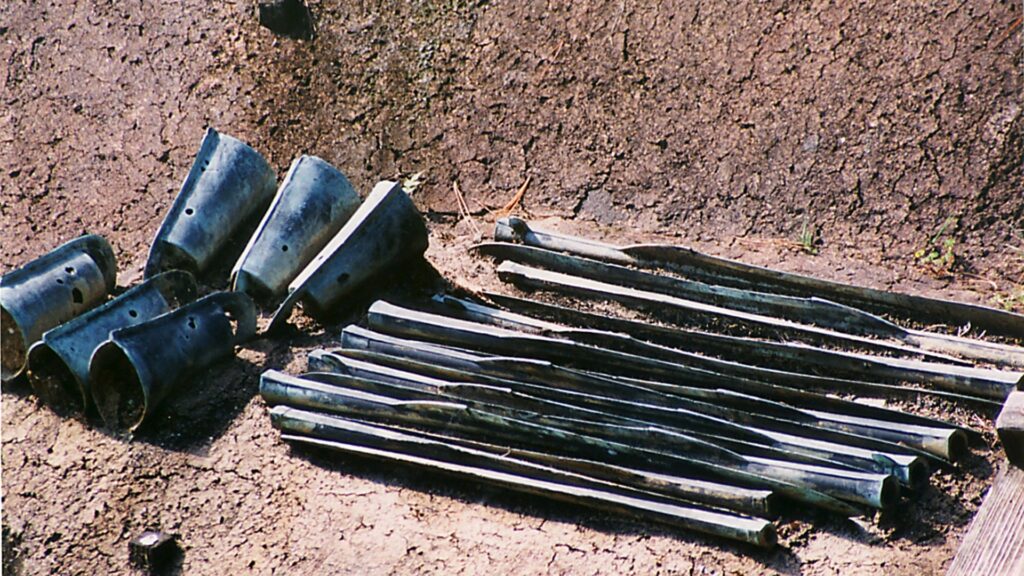
- Among its historical treasures, 358 meticulously buried bronze swords were discovered at the Kojin-Dani Ruins – each a National Treasure. Intriguingly, the number 358 coincides with the total count of shrines in Izumo province, implying the total number of the tribal chiefs in Izumo
- Additionally, 46 finely crafted bronze bells were unearthed at the Kamo-Iwakura Ruins – each also a National Treasure. The resounding chime of these golden bronze bells likely served as a prayer for peace and bountiful harvests. During the Yayoi period, these metallic sounds were an unprecedented encounter, possibly evoking a sense of spiritual connection with the deities. Some of these bells featured intricate patterns, depicting deer, symbolizing the spirits of the land, and dragonflies, representing the deities of the rice paddies.
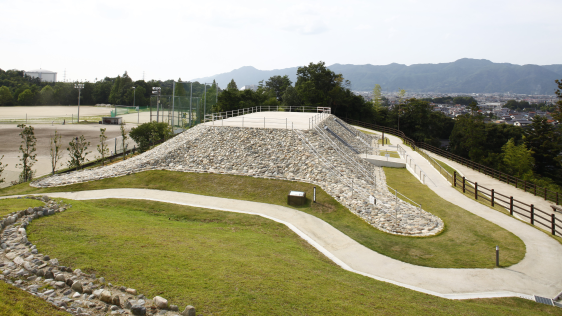
- In the late Yayoi period (around AD1~2C), as neighboring regions like Kyushu and Kibi(Okayama) grew in power, the need to unify under a strong ruler became imperative. They buried gleaming bronze bells and swords beneath the earth, marking a path toward the formation of the protective Izumo nation under a formidable monarch. This era saw the construction of distinctive four-cornered protruding tombs, a unique feature of Izumo. By the end of the Yayoi period (AD 200-300), as Izumo proposed and its leadership expanded, these tombs became among the largest in the nation. Notably, Nishitani Tomb No. 9, the largest of them all, measures 42 meters from east to west, 35 meters from north to south, and stands at a height of 5 meters. The mounds were centers for various rituals.
Izumo's Spiritual Power is Essential to the Yamato Regime

(Source: Menoya / 写真:めのや)
Once the Yamato regime came to power in Asuka(Nara) and the regional integration under the Okimi, the Great King, was promoted, the Izumo region was also ruled under Yamato rule. This is the base of the "Kuni-Yuzuri" Myth. However, Izumo kept animistic and spiritual power fearsome, which was mandatory for the ancient leaders to govern their regions through not only force but also rituals and ceremonies. In ancient times, natural phenomena were considered "Kami" or deities themselves. People listened to these divine voices, worshipped these deities, and found solace in their blessings. These rituals were, in essence, the governance of the era. This spiritual power could not be neglected by the Yamato regime, and it became a special presence for the Yamato sovereign. The Izumo is a focal point for Shinto rituals and boasts an astonishing number of 100 to 200 shrines annually, contributing to its unique significance. Every 60 years, the shrine is ceremoniously rebuilt into a fresh shrine, rejuvenating the spiritual power associated with Okuninonushi, which gives eternal life. Additionally, an annual grand ceremony takes place in May, highlighted by the Emperor’s presentation of a sacred object. This event earned the distinction of being recognized as "the most important holy ritual in the country.” Furthermore, the Kamuyogoto is a prayer to the emperor offered by only the highest priest of Izumo Taisha among all priests to pray for his long life and good health with Mihogitama treasure that possesses spiritual power in Izumo: live long until the emperor's hair turns white like a white ball (crystal), to be as fair-blooded as a red ball (agate), and to live a quiet and serene life like a green ball (jasper).
Izumo's Sacred Power for You
Let's journey to Izumo to immerse ourselves in its ancient and magnificent history, which is beautifully reflected in its mythical world. This enchanting experience allows us to get the sacred power of Izumo. The way to worship at shrines is "2, 2, and 1," or "bow twice, clap twice, bow once again." But at Izumo Taisha, it is "2, 4, and 1." In addition, at the special festival on May 14, it is "2, 8, and 1." People praise Izumo's deity with endless applause with "eight claps," which has meant an infinite number since ancient times.
Izumo Timeline
| BC.400 | Bronze Rituals Developed in Izumo | Yayoi Period |
| BC.221 | The Qin Dynasty was established in China | |
| (Yamato) A moat settlement began to be established in Karako-Kagi area in the Nara Basin. | ||
| AD.1 | Four-cornered projecting tombs begin to be built in Izumo | |
| AD.100 | (Yamato) Makimuku ritual space emerged in the Nara Basin. | |
| (Yamato) Makimuku ritual space emerged in the Nara Basin. | ||
| AD.200 | The initial Hata clan became a naturalized citizen of Japan | |
| Himiko was installed as ruler and began to govern Wa(Japan) | ||
| 239 | Himiko dispatched an envoy to Wei and received a gold seal and many bronze mirrors. | Kofun Period |
| The large Nishitani Tomb No. 9 was constructed in Izumo | ||
| 300 | (Yamato) Hashihaka Kofun, a large keyhole-shaped tomb mound, was constructed in Makimuku ruin. | |
| 475 | Baekje fell in 475 | |
| 5C | Emperor Nintoku dug out a canal between Osaka Bay and Kawachi Lagoon |
Recommendations to visit
Izumo Taisha Shrine
- Access (Train): 25 minutes from JR Izumoshi Station. Take Ichinata Bus to "Seimon-mae (正門前)," then a 10-minute walk to Kawato Station. 11 minutes train to "Izumotaisha-mae (出雲大社前)"
- Access (Air/Bus): 1 hour from Izumo Enmusubi Airport to Izumo Taisha by Ichibata Direct Bus
Shimane Museum of Ancient Izumo
- Access: 7-minute walk from Izumo Taisha Shrine

